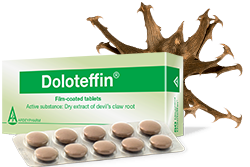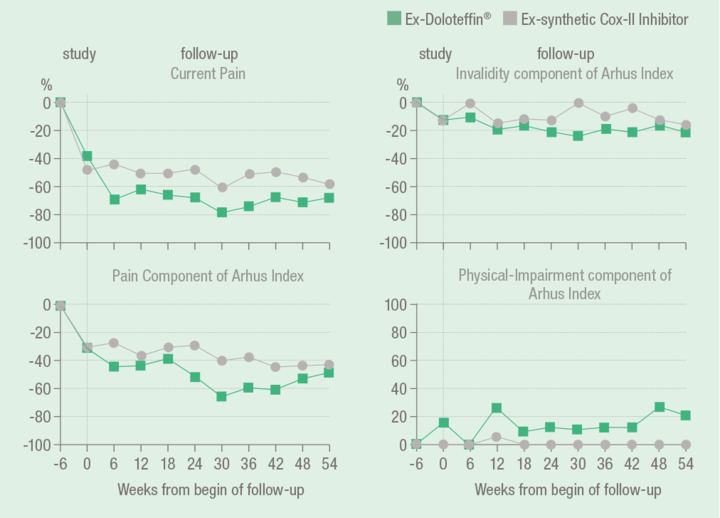Doloteffin – clinically proven efficacy
Doloteffin versus synthetic Cox-II Inhibitor in patients with back pain 1
- Prospective, randomized, monocentric, double-blind study of phase IV 1
- Patients with acute*, non-specific back pain lasting for more than 8 weeks in the scope of chronic** back pain
- Treatment duration of 6 weeks
- 88 patients (44 patients per group)
- 1-Year follow up study 2
*Visual analogue score > 5, **Lasting for at least 6 months
Number of pain-free patients
5 pain-free days per week without taking the rescue medication Tramadol
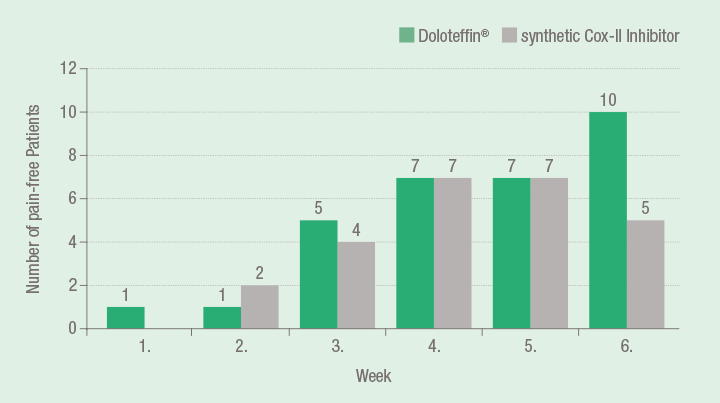
Relative improvement of ABPI* after 6 weeks
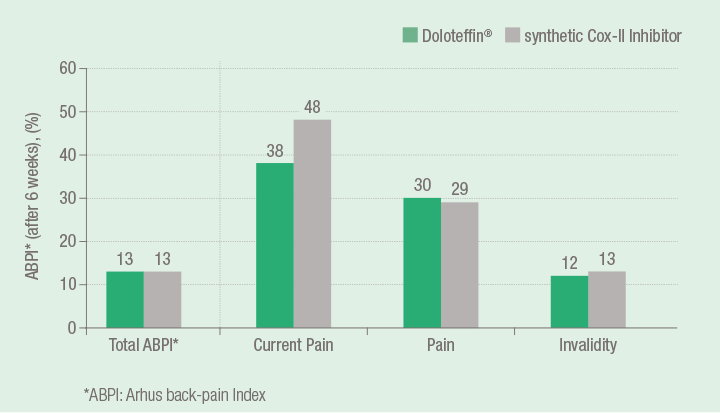
Relative improvement of the quality of life*
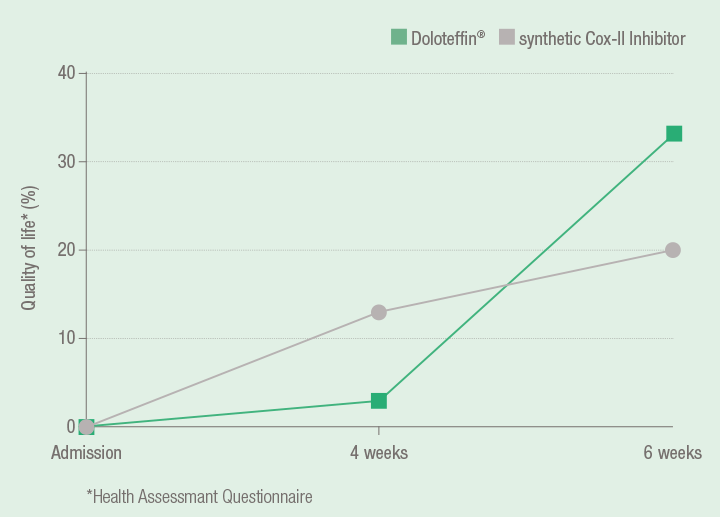
Efficacy:
10 patients of the Doloteffin group and 5 patients of the synthetic cox-II inhibitor group were pain-free after 6 weeks of therapy. With regard to this primary target criterion there was a non-significant trend in favour of Doloteffin (p = 0.257, Fisher‘s exact test).
Tolerance/safety:
The general assessment of tolerance was similar in both groups. 31.8% of patients in both treatment groups presented with adverse events.
Summary:
Doloteffin treatment is not inferior to synthetic cox-II inhibitor treatment with regard to the efficacy and tolerance.
Significant results of the 1-year follow-up study 2
- Of 88 patients who had participated in the study 1 year before, 73 patients continued on for a subsequent 1-year follow-up. All follow-up patients received Doloteffin.
- Former Doloteffin patients: n = 38
Former synthetic Cox-II Inhibitor patients: n = 35
Pain assessment according to diary
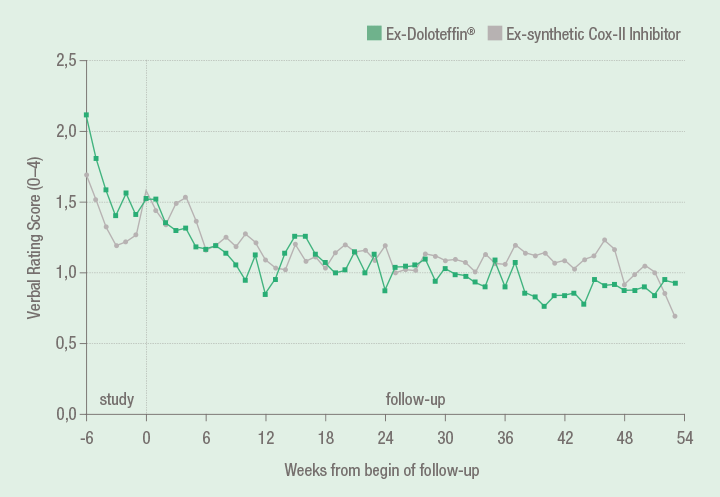
Improvement of the “pain“ component of ABPI*
(median, per-protocol evaluation)
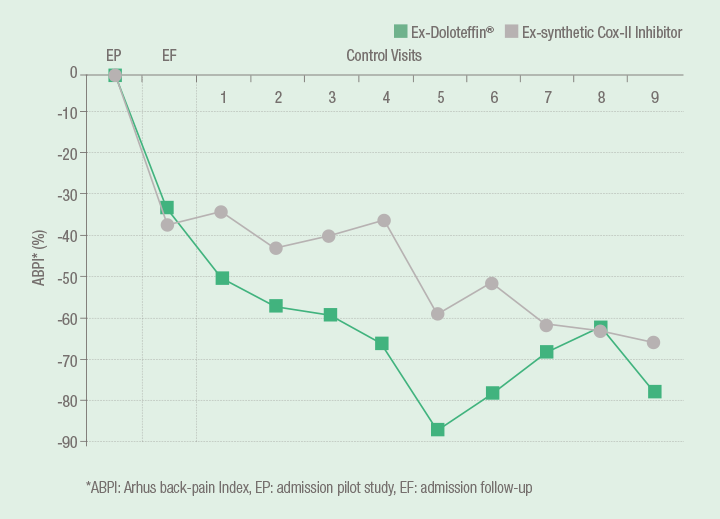

1. Chrubasik et al. Rheumatology 2003; 42:141–148.
2. Chrubasik et al. Phytomedicine 2005; 12:1–9.

